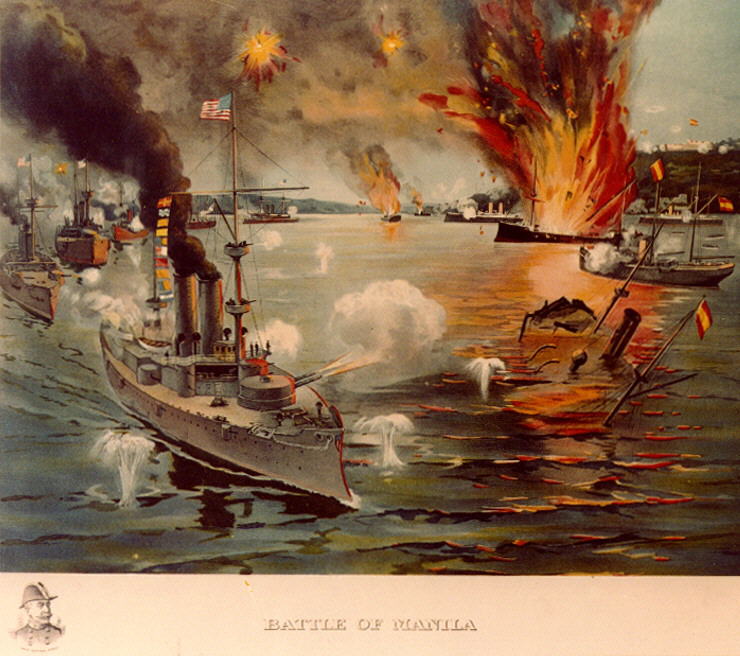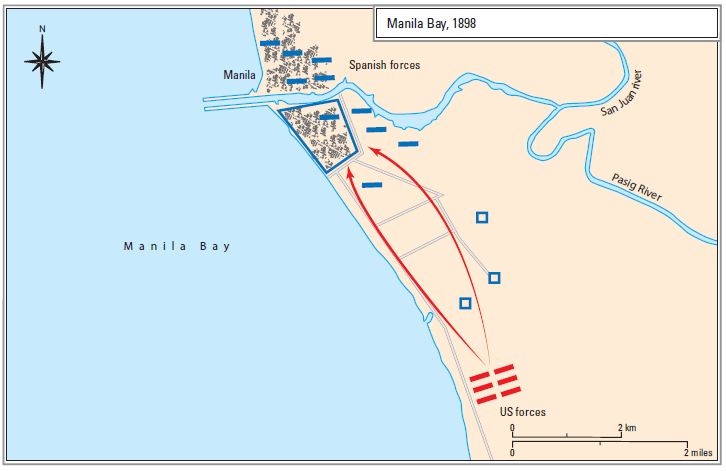Editor: Michael Spilling and Consultant Editor: Chris McNab
The Battle of Manila Bay took place on May 1, 1898, during the Spanish–American War. The engagement was one of the most decisive naval battles in history. It marked the end of the Spanish colonial period in Philippine history.

The destruction of the Spanish fleet in Manila Bay and the reduction of the harbor forts allowed the US squadron to blockade the Spanish capital in the Philippines. However, foreign warships lingered in the area. Some 10,000 nationalist Filipino forces, led by Gen Emilio Aguinaldo, completed the landward investment of the city.
General Wesley Merritt arrives at Manila Bay
US General Wesley Merritt arrived in June with the first land forces, eventually totaling 10,800 men by August. Adm Dewey maintained US control of Manila Bay over the intervening months with increasing difficulty. As an example, a reinforced German cruiser squadron under RAdm Otto von Diederich committed several violations of recognized procedures in the blockaded port.
US policy was to avoid all formal terms of alliance with the Filipino rebels against Spain’s rule. Notwithstanding, Merritt and Aguinaldo cooperated in trapping Fermin Jaudenes, Governor-General of the Philippines, and his 13,000 troops within Manila’s walls. This left two monitors mounting large cannon suitable for shore bombardment joined Dewey’s squadron. At the start of August, Merritt delivered an ultimatum to Jaudenes, offering a chance to evacuate non combatants before the reduction of the city. The Spanish refused, citing the hostility of the Filipinos as justification.

On 13 August, the American forces attacked Manila. The Spanish resisted until the following day, when Jaudenes formally surrendered the city.
The aftermath
Even as their own forces attacked and entered Manila, the Americans denied entry to the surrounding Filipino troops. This set the stage for additional months of fighting as the United States asserted control over a fierce native force set upon independence for the Philippines. The formal end of the Spanish-American War had come with the signature of the Treaty of Paris some two months before Manila’s fall.
Dr. Chris McNab is the editor of AMERICAN BATTLES & CAMPAIGNS: A Chronicle, from 1622-Present and is an experienced specialist in wilderness and urban survival techniques. He has published over 20 books including: How to Survive Anything, Anywhere, an encyclopedia of military and civilian survival techniques for all environments. Special Forces Endurance Techniques, First Aid Survival Manual, and The Handbook of Urban Survival.
